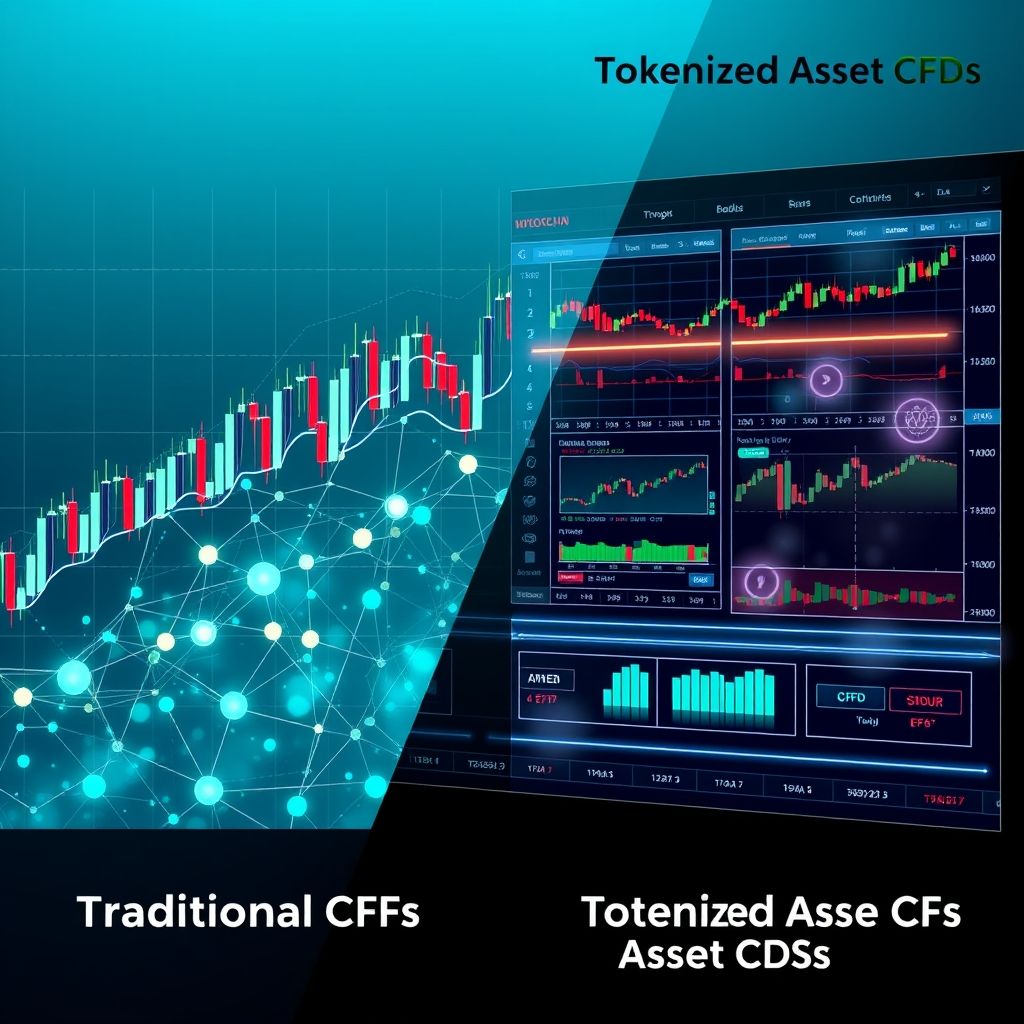How do Tokenized Asset CFDs differ from traditional CFDs?
How Do Tokenized Asset CFDs Differ from Traditional CFDs?
Imagine trading your favorite stocks, cryptocurrencies, or commodities without the hassle of physical ownership or hefty fees. That’s the promise of tokenized Asset CFDs—bringing a fresh twist to an old-school trading arena. As Web3 tech continues to evolve, understanding how these new instruments stack up against traditional CFDs can give traders a real edge in this rapidly shifting financial landscape.

What Are Tokenized Asset CFDs?
Think of tokenized Asset Contracts for Difference (CFDs) as digital versions of familiar trading tools, but with a Web3 twist. Instead of dealing with certificates or physical assets, youre trading a digital token — a representation of an underlying asset such as gold, Tesla stock, or Bitcoin — that’s secured on a blockchain. This allows you to speculate on price movements without taking actual ownership, fitting right into the decentralized finance (DeFi) era.
For example, imagine owning a tokenized version of gold that’s tradable 24/7 via decentralized platforms, compared to traditional gold ETFs traded during market hours. It’s all about liquidity, speed, and transparency in the digital domain.
Features and Advantages of Tokenized Asset CFDs
Accessibility & Fractional Trading
Most traditional CFDs demand a minimum deposit and may come with restrictions. Tokenized CFDs often lower these barriers; you can buy a fractional part of an asset, like a small slice of a Bitcoin or a tiny percentage of a stock. That democratizes investing, enabling more traders to participate regardless of capital size.
Enhanced Liquidity & 24/7 Markets
Traditional CFDs follow market hours, with liquidity dipping during off-hours. Tokenized assets on blockchain tend to be tradable around the clock, opening up new opportunities for quick entry and exit — particularly relevant in volatile markets like crypto or forex.
Transparency & Security
Using blockchain tech, tokenized CFDs provide a transparent ledger of transactions and holdings. No more worrying about hidden fees or counterparty risks; the blockchain’s immutability means your trades are securely recorded and traceable.
Reduced Counterparty or Custodian Risk
Traditional CFDs typically involve brokers acting as intermediaries, adding layers of trust and potential risk. Tokenized CFDs, especially in decentralized setups, cut out middlemen. Your exposure is limited to the smart contract executing the trade, reducing reliance on intermediary solvency.
Comparing with Traditional CFDs
| Aspect |
Traditional CFDs |
Tokenized Asset CFDs |
| Trading Hours |
Market hours, extended during specific sessions |
24/7 globally, especially for crypto assets |
| Asset Ownership |
No direct ownership, just speculation |
Similar, but backed by blockchain tokens |
| Transparency |
Broker-controlled, sometimes opaque |
Transparent on the blockchain ledger |
| Custody & Counterparty |
Broker holds your position |
Smart contracts eliminate middlemen |
| Entry Barriers |
May need larger deposits |
Fractional trading lowers threshold |
Web3 & DeFi: What’s Next?
DeFi platforms are pushing the boundaries. Imagine combining tokenized CFDs with AI-driven predictive models, enabling traders to automate and optimize strategies on the fly. Smart contracts are also making trading more secure and efficient, removing human error and bias.
But it’s an evolving space — challenges include regulatory uncertainty, security concerns like smart contract exploits, and liquidity problems for less popular assets. Still, the trend is clear: future trading will be more decentralized, automated, and AI-assisted.
The Road Ahead: Trends, Tips, and Caution
In this brave new Web3 world, effective leverage management and disciplined trading strategies become more critical, especially since the 24/7 nature increases risk exposure. Diversify across assets like forex, stocks, commodities, and crypto. Keep an eye on security: choose reputable platforms, check smart contract audits, and stay updated on evolving regulations.
The future is promising—with decentralized finance and AI converging to create more inclusive, transparent, and efficient markets. For traders, embracing tokenized Asset CFDs means stepping into a more open and innovative arena, where the boundaries of traditional finance are constantly being redefined.
Because in this fast pace, hybrid world of tradFi and DeFi, smarter, faster, and more transparent trading isn’t just a dream — it’s happening now.